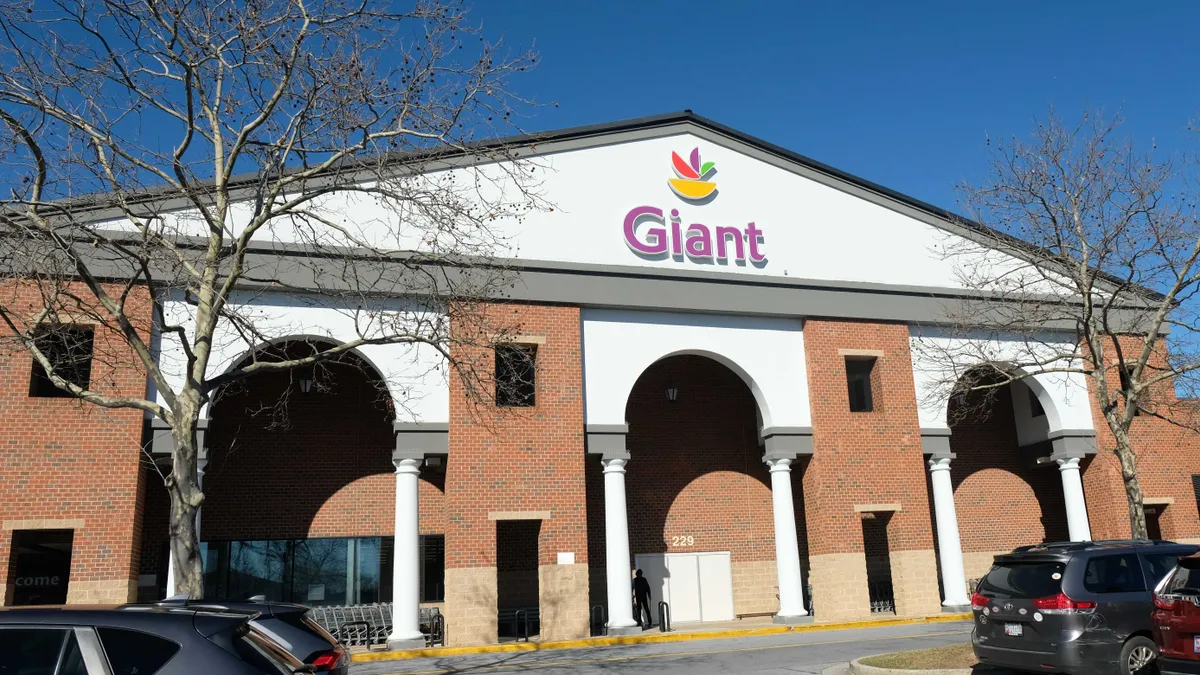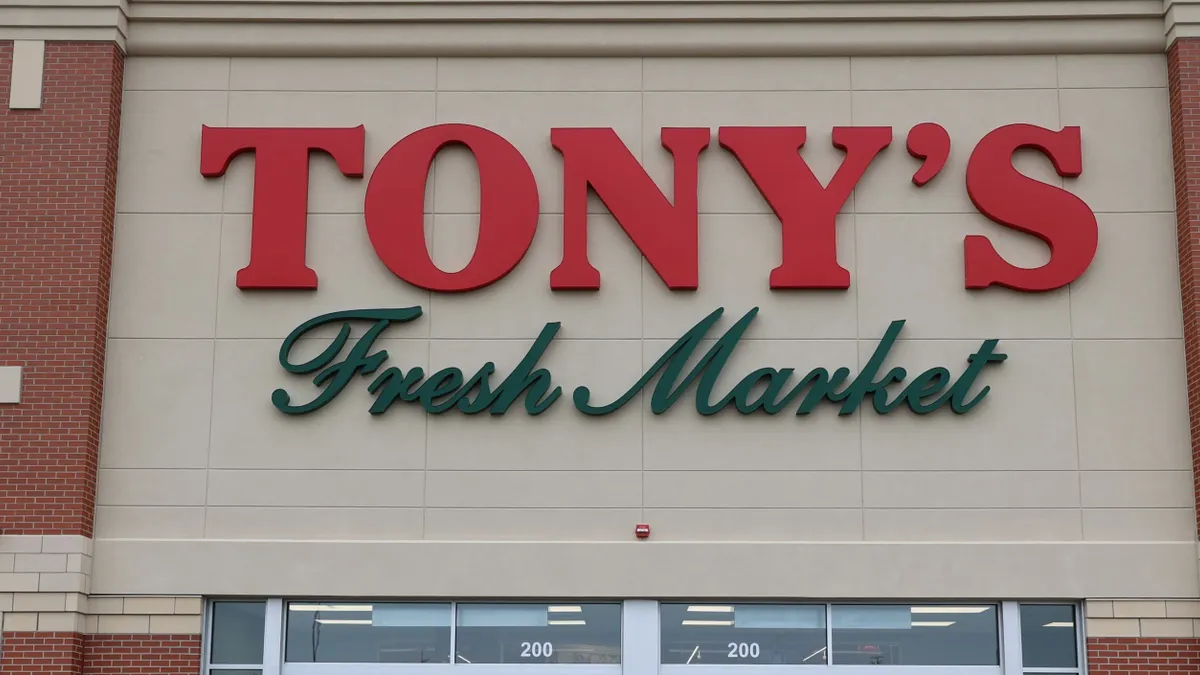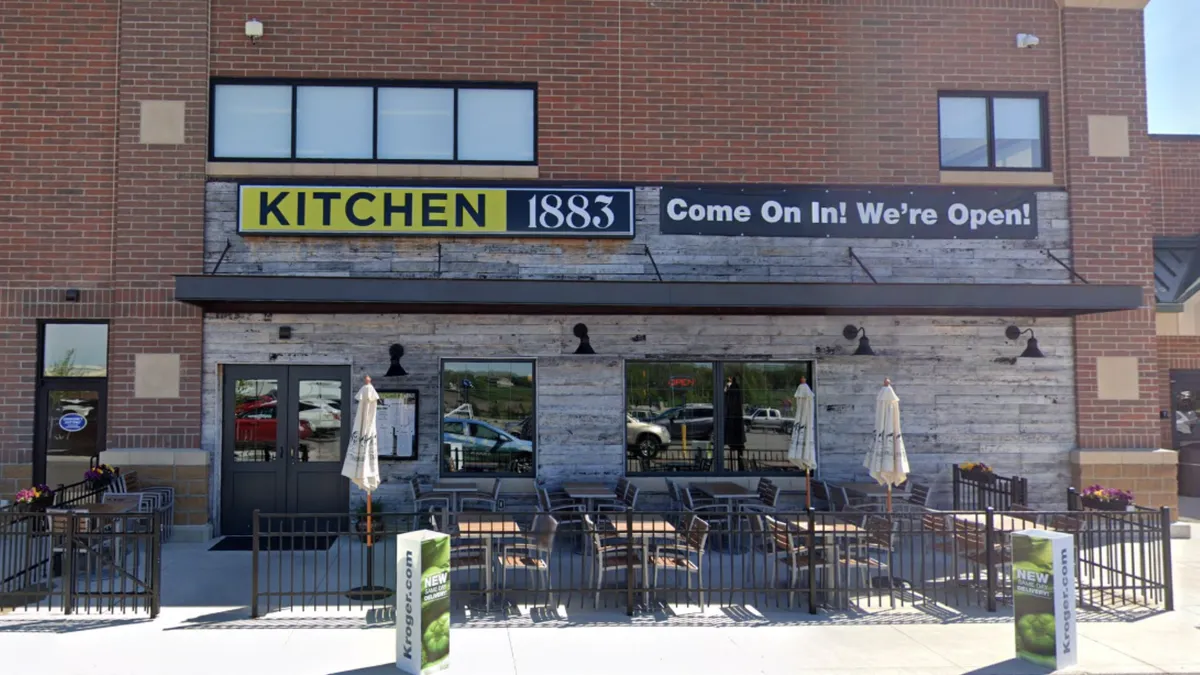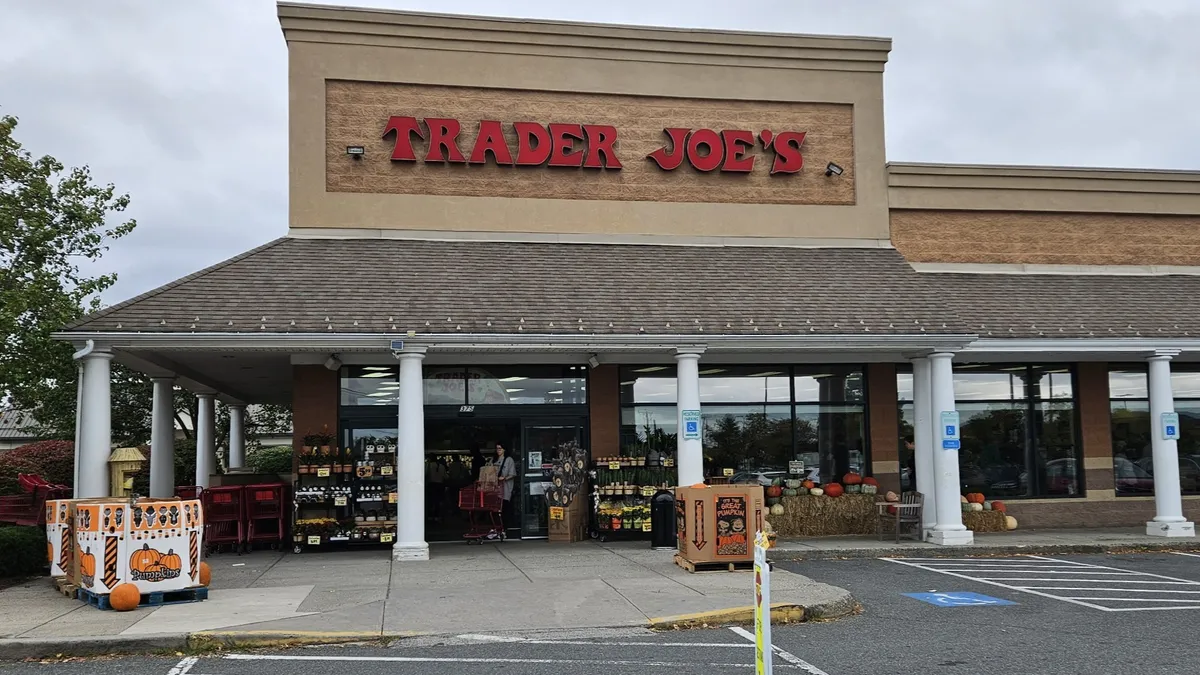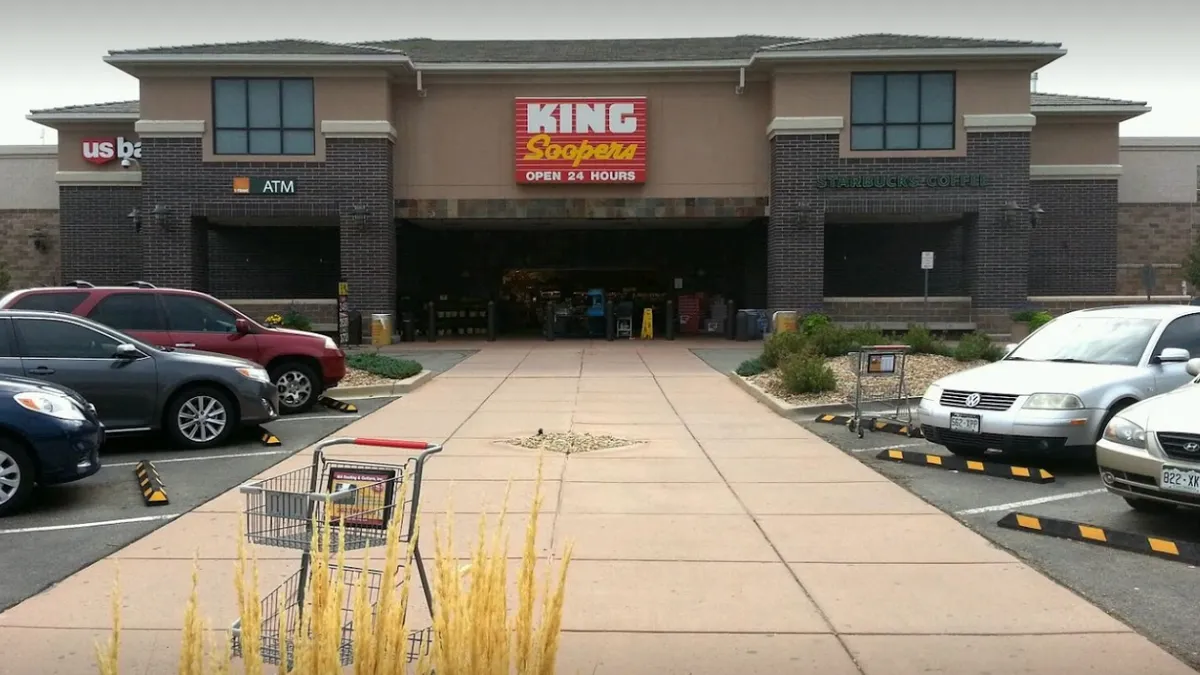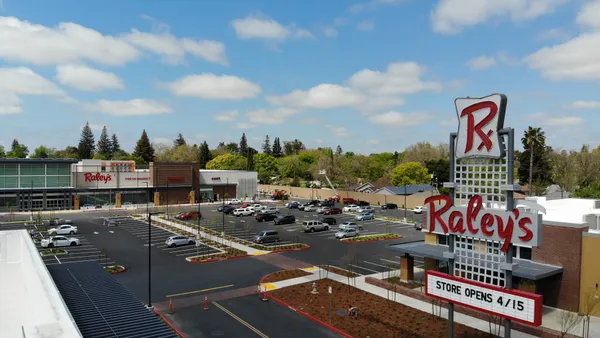The struggles of mall stalwarts such as Macy’s, Sears and J.C. Penney could spell opportunity for supermarket chains. Just last month, beloved Connecticut chain Stew Leonard’s began renovating an 80,000-square-foot location at New Jersey’s Paramus Park Mall formerly occupied by Sears.
That Sears store, which shuttered last year just months before the chain filed for bankruptcy, was one of hundreds the chain has closed over the past few years. Sears has since reemerged under former CEO Eddie Lampert, but still plans to close more than 200 additional stores.
Macy’s said in 2016 it would close 100 locations in the coming years, while J.C. Penney announced it is closing at least 27 full-line stores this year. And it’s not just the major department stores that are leaving. Up until January, the U.S. mall vacancy rate was at a seven-year high.
A wide range of grocers, including Wegmans, Lidl, Whole Foods and The Fresh Market, have pounced on vacant mall space recently. Drawn by the prospect of high visibility, a destination location and generous enticements from landlords, these so-called "mall marts" have been cropping up across the country.
But given the struggles of previous tenants and the unique challenges that come with mall real estate, the opportunity is a complicated one for grocers.
A destination location
One of the biggest advantages grocery stores can earn as occupants of anchor mall locations is comparatively low rent. This is because anchor department stores were malls' prized possessions and thus charged lower rent than other tenants, Nick Egelanian, president of retail real estate consulting firm SiteWorks, told Grocery Dive.
For example, in 2017 Sears paid an average of $4.40 per square foot to landlord Seritage Growth Partners — an investment trust the once-thriving chain used to own — while other tenants paid an average of $12.74 per square foot, according to real estate firm JLL.
Often department stores such as Sears and J.C. Penney owned the property, June Williamson, a professor of architecture at the City College of New York, told Grocery Dive. When they’re forced to move out, they either sell the property to the malls or keep it and lease to a noncompeting retailer, making a grocer an ideal choice in many cases, she noted.
Grocers won’t pay as low as $4.40 per square foot, Egelanian said, but mall operators try to price the space competitively. Food retailers can often get a per-square-foot deal that’s cheaper than the strip mall spaces they typically prefer, he noted.
Mall operators covet the steady foot traffic grocery stores generate. Indeed, while department stores have struggled in the e-commerce age, food retailers remain a regular destination for millions of Americans week in and week out. According to the Local Search Association, 80% of consumers are still primarily in-store shoppers.
Grocers, meanwhile, can gain prime locations in cities and suburbs, ample space for parking that could boost e-commerce efforts such as click-and-collect, and an indoor-outdoor entrance into the store, said Neil Stern, senior partner at McMillanDoolittle.
Another perk for grocers is established foot traffic and synergies from surrounding stores, movie theaters and restaurants, said Joe Cosenza, vice chairman of The Inland Real Estate Group, a commercial real estate firm in Illinois.
Last year, Wegmans — a retailer known for big, splashy stores — opened its first mall location at the Natick Mall just west of Boston. The 146,500-square-foot space, which spans two floors formerly occupied by a J.C. Penney, includes a Mexican restaurant, burger joint, coffee bar and more than 70,000 products, from fresh produce to an extensive beer and wine selection.
Wegmans officials told local media they had spent years looking for a location in Natick, Massachusets before the J.C. Penney closed down in 2015.
But not every grocer wants to — or can afford to — fill more than 100,000 square feet. For several years, Aldi has been building non-anchor mall locations, including a store at the Chicago Ridge Mall that's bracketed by a Sears and a Kohl's. In December, rival discounter Lidl opened a 36,000-square-foot store in New York's Staten Island Mall.
"Grocers are still looking to grow and malls have excess space — both in the center and in lots and with excess parking fields," Stern said.
At the Staten Island Mall, Lidl is surrounded by a plethora of different establishments, including a Century 21 department store, a CVS, an Adidas store, Express, Zara, J.C. Penney and an AMC Theatre. It is also located near classic food court options including Auntie Anne's and Chick-fil-A as well as casual restaurants such as Red Robin and Applebee's.
Inside the store is a six-aisle layout featuring fresh-baked goods at the entrance, an array of cheeses, meat and seafood. It also offers organic produce, gluten-free products, dairy, packaged foods and a slew of nonfood items from fitness gear and small appliances to toys and outdoor furniture.
In 2016, The Fresh Market leased a 27,000-square-foot store in Virginia Beach’s Pembroke Mall from Sears after the department store chain decided to downsize. The retailer told Grocery Dive that the space was chosen due to many factors, including proximity to other shops.
"It allows our guests to fulfill all of their shopping needs in one location," Darlene Demarest, The Fresh Market’s director of real estate, told Grocery Dive in an email. "Being near synergistic retailers is always a plus. Our guests want easy access and ample parking, and this location was also able to accommodate those needs."
"Grocers are still looking to grow and malls have excess space."

Neil Stern
Senior partner, McMillanDoolittle
Do both parties benefit?
In an effort to court grocers, mall landlords often pitch the notion of a symbiotic relationship between the stores and surrounding retail establishments. Consumers can pick up groceries, grab a meal at the food court and stop by surrounding stores to finish up errands.
According to a survey last year by Valassis, 17% of consumers say they’d be more likely to go to a mall if there were grocery options on site. But Egelanian argues this isn’t the way most consumers shop.
"The landlords have been saying that forever, and the premise is that the customer wants to do the rest of their shopping at the mall," he said. "But 80% of all shopping done in America is not done in malls, it’s done in strip centers."
In addition, not all malls are created equal. The most profitable malls, or "A" malls, can generate considerably more traffic than "B" or "C" grade malls, which are often struggling to stay afloat. Egelanian said grocers should steer clear of "C" malls and carefully weigh the cost versus benefits of an "A" or "B" location, including rent price, surrounding stores, access points and local demographics.
The average consumer goes to the grocery store more than twice a week, Cosenza said. These shoppers are looking to get in and out, and convenience is key. Malls are often sprawling and made to fulfill occasional, high-ticket shopping trips rather than regular trips.
This shows that the malls may reap more benefits from having a grocery store on site than the retailer would, he said.
"You shop at Macy’s and make your way to the other side of the mall where the grocery store is and then you have to walk back to the Macy’s side where your car is parked with all your groceries," said Cosenza.
Parking and entry to the outside of the store are important for a number of reasons, including pickup services, Cosenza said. Customers might not want to trek around the mall with their groceries — particularly perishables like ice cream.
"Grocery stores need a pickup area for these customers to drive around and pick up the groceries they purchased in store," he said.
For retailers and mall owners that are interested in partnering, care should be taken to ensure that many of the conveniences shoppers expect are provided, said Stern.
"Shopping centers must also be able to provide easy access to the store — so issues like a dedicated parking field and a direct entry are very important," said Stern.
Grocers that are located in malls or contemplating entering a mall may also want to create a more developed prepared food selection. Cosenza says consumers who are shopping in the mall are more likely to pick up something for dinner that’s premade, rather than picking up a week's worth of groceries to lug around.
Stew Leonard's new mall location plans to have a 50-member kitchen that will prepare hot foods throughout the day as well as refrigerated, ready-to-eat meals. In addition, it will host a from-scratch bakery, cut-to-order butcher shop and a fresh seafood department.
Grocers could find other uses for mall space. As vacancies continue and struggling operators shut down — bringing the term "dead malls" into the modern lexicon — retailers could repurpose mall space for store and online fulfillment.
One notable retailer is already doing just that, Williamson noted.
"Amazon is part of a longer-term trend of taking some malls and turning them into back-office spaces or warehouse spaces," said Williamson. "You have the large footprints in the buildings with high ceilings and lots of parking. So in that case, you’ve taken it out of the direct customer realm but it’s still a part of the retail ecosystem."
In other cases, big-box retailers like Walmart that are too large to enter a mall will bring the mall to shoppers. In October, the retailer announced plans to lease its underutilized land and parking areas to restaurants, gyms and other businesses to create town centers. These community centers are planned for dozens of communities across the country.









